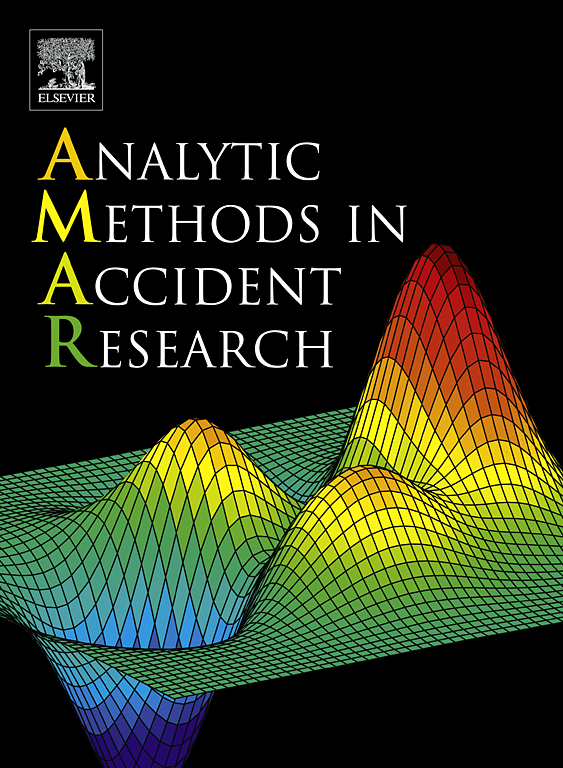Assessing non-motorist safety in motor vehicle crashes – a copula-based approach to jointly estimate crash location type and injury severity
Abstract
Non-motorist injury severity can be affected by various observed and unobserved attributes related to the crash location type (segment or intersection). Recognizing the distinct non-motorist injury severity profiles by crash location type, we propose a joint modeling framework to study crash location type and non-motorist injury severity as two dimensions of the severity process. We employ a copula-based joint framework that ties the crash location type (represented as a binary logit model) and injury severity (represented as a generalized ordered logit model) through a closed form flexible dependency structure to study the injury severity process. The proposed approach also accommodates the potential heterogeneity (across non-motorists) in the dependency structure. The data for our analysis is drawn from the Central Florida region for the years of 2015 to 2021. The model system explicitly accounts for temporal heterogeneity across the two dimensions. A comprehensive set of independent variables including non-motorist user characteristics, driver and vehicle characteristics, roadway attributes, weather and environmental factors, temporal and socio-demographic factors are considered for the analysis. We also conducted an elasticity analysis to show the actual magnitude of the independent variables on non-motorist injury severity for the two locations. The results highlight the importance of examining the effect of various independent variables on non-motorist injury severity outcome by crash location type.

 求助内容:
求助内容: 应助结果提醒方式:
应助结果提醒方式:


